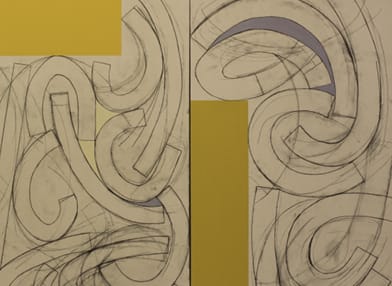
Carlos Melian was born in Havana, Cuba, and currently lives and works in Chicago, IL. He received a Bachelor of Fine Arts from the University of Flordia, a Master of Fine Arts from the University of Wisconsin-Madison and a Master of Science, Library and Information Science from the University of Illinois at Urbana / Champaign. Melian worked as the Dean of Libraries at Northeastern Illinois University, and although he continued actively making art, he temporarily ceased exhibiting. Since his retirement in June 2017, Melian has been working every day in his studio. He has exhibited at Jack Olson Gallery at Northern Illinois University (DeKalb, IL), Chicago Cultural Center (Chicago, IL), Gallery 400 at the University of Illinois at Chicago (Chicago, IL), Zolla-Lieberman Gallery (Chicago, IL) and more.
ARTIST STATEMENT
My work has always had a concise conceptual path with decidedly different materials and methods. A return to painting was my primary concern in 2002 but I could not adopt a formalist approach to picture making. As I began to paint again, I continued to be involved with “object” making (non-standing, non-sculptural) even with all the painterly elements and processes that I adopted. My interest is how one object (painting, drawing, panel) relates to or compares to another. Each work is generated by simple actions (squaring, hanging, leaning, measuring, etc.) to step away from the pictorial. Images are generated based on a random set of rules and limits. I prefer this method of generating images as it relieves me of the subjective pressures of abstraction and composition.
All of the “titles” begin with the word “UNTITLED” which emphasizes the non-literary aspect of abstraction. The rest of each title consists primarily of verbs or simple descriptions to describe how an object or groups of objects are related or created. Visually, there is a strong sense of comparing objects/surfaces or pushing the boundaries of what one sees, completing a rectangle, for example. I prefer that the viewer engages in more than just looking or viewing. The act of comparing is, I believe, more productive, revealing more meaningful connections and conclusions.



